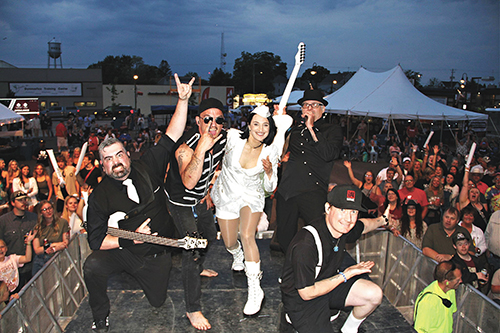Whose turn is it, anyway?
This month, the Wisconsin State Patrol reminds drivers to follow the “rules of the road” when making turns – especially in intersections. The Federal Highway Administration reports that over the last several years, an average of one-quarter of traffic fatalities and roughly half of all traffic injuries, are attributed to intersections.
“Safely navigating an intersection is one of the most complex activities that motorists perform,” said Captain Craig Larson.
Engineers continuously refine designs and signaling changes to improve intersection safety, but drivers play a huge role in preventing crashes, by staying attentive and cautious.
Common safety rules for turns include the following:
• Plan ahead and start moving to the lane that is appropriate for the turn, at least one block in a city area or about 500 feet in the rural area. That way, the vehicle won’t suddenly have to move over multiple lanes.
• Check mirrors and check over the shoulder for a blind spot, to make sure there are no vehicles before changing lanes.
• Use the turn signal in advance. Wisconsin law requires at least 100 feet before the turn, to indicate to other drivers the intention of changing lanes or getting ready to make a turn.
• Slow down to a safe speed when getting ready to make a turn.
• Be careful around pedestrians and bicyclists, and give them the right-of-way.
• If there are signs or lane markings, that allow for two or more turning lanes, stay in the same lane during the turn.
• If turning at an intersection, do not change midway through. Last second changes can cause a crash. Complete the turn and correct travel at the next intersection.
• Do not drive in a reserved lane. Reserved lanes that are marked for parking, or restricted to buses, bicycles or turns, only should not be used for general travel.
• Drivers may be more likely to misjudge the speed and distance of large vehicles, such as semi-trailer trucks or buses, so be more careful and be patient, when there are large vehicles approaching.
Right turns can pose a problem for some drivers who are unaware of road laws, as can U-turns, so the following should be adhered to:
• Unless otherwise marked or posted, turn as closely to the right-hand-edge or curb of the roadway.
• Unless otherwise marked or posted, turn into the travel lane farthest to the left going in the driver’s direction.
• On a two-lane highway, the center lane is reserved for making left turns (or U-turns when permitted) by vehicles traveling in either direction. On the pavement, left turn arrows for traffic in one direction alternate with left-turn arrows for traffic coming from the other direction. These lanes are marked on each side by solid yellow and dashed yellow lines. Be sure to enter the lane, only if it is safe to do so.




